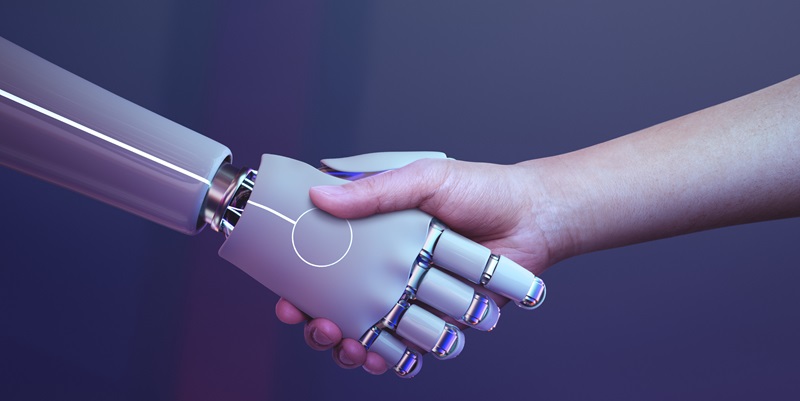Front-line workers are increasingly interfacing with artificial intelligence (AI) and machine learning (ML) technologies in the workplace. This transition can radically change their work environment and job roles. This article will explore how businesses can deploy AI in ways that support, rather than supplant, their human employees, thus helping them be more productive and enhance their decision-making processes rather than causing fear and uncertainty.
Unpacking the Impact of AI on the Workforce
The Current Landscape
Understanding the ubiquity of AI and ML technology in today’s job market is essential. Across various industries, artificial intelligence and machine learning are no longer futuristic concepts but present-day tools that reshape the nature of work itself. From manufacturing floors to the offices of insurance companies, the integration of AI/ML aims to streamline operations and bolster productivity. This technology collects and analyzes vast amounts of data at speeds unattainable by humans, thus helping businesses uncover insights and patterns that can drive more informed decisions.
Reactions from Front-Line Employees
The reactions of front-line workers to AI/ML deployments are pivotal in shaping workplace dynamics. Some employees embrace these technologies, foreseeing a future where mundane tasks are automated, allowing them to focus on the more significant and rewarding aspects of their jobs. Yet, many others view the advent of AI with trepidation – fearing the devaluation of their job performance, job loss, or that their years of accumulated expertise may be sidelined. This spectrum of attitudes highlights the need for businesses to address workers’ concerns genuinely and constructively.
Bridging the Gap between Technology and Human Work
Informed Integration of AI
Informed integration of AI into the workplace is vital for fostering an environment where employees can thrive alongside technological advancements. Training programs become a conduit for demystification, allowing workers to understand AI/ML’s functionality and benefits. For example, in the insurance claims industry, employees who know how to interpret AI-generated data can complement this with their expert judgment, resulting in superior decision-making. Such education helps transform doubt into confidence, painting AI/ML as tools that enhance, rather than eclipse, human expertise.
Synergy Between Human Expertise and AI
AI, when deployed sensitively, can create a symbiotic relationship with human expertise. This is evident in fields like healthcare, where diagnostic AI supports doctors by offering preliminary data analysis. Here, the human professional still holds the reins, using the machine-provided insights as a part of their broader, nuanced diagnostic process. This synergy ensures that while AI handles the heavy lifting of data processing, it is the human’s domain to interpret and act on that information, thus affirming the irreplaceable value of human judgment and experience.
Strategies for a Positive AI Workforce Transition
Promoting Transparent Communication
Transparent communication is the cornerstone of a successful AI implementation strategy. Management must engage in honest dialogue with front-line employees, addressing fears about job disruption and underscoring AI’s role as an aid, not a replacement. Methods such as town halls and focus groups can serve as platforms for this exchange, occurring regularly to reassure and realign the workforce’s perception of AI as part of their toolkit.
Continuous Learning and Skill Evolution
As AI reshapes job roles, continuous learning becomes not just a benefit but a necessity. Upskilling initiatives can facilitate employees’ transition, providing them with the tools to engage with AI effectively. This may include digital literacy programs, AI/ML workshops, and career pathing sessions tailored to the evolving job market. By embracing lifelong learning, workers can adapt with the changing landscape, positioning themselves as invaluable assets capable of navigating an AI-enhanced future.
Navigating the Future with AI as a Collaborative Tool
Adopting a Balanced Viewpoint
A balanced viewpoint is crucial when considering the role of AI in the workplace. It is imperative to recognize AI’s potential to enrich jobs and create new opportunities, rather than exclusively focusing on job displacement. Establishing this balanced perspective requires an objective understanding of the technology and a focus on its potential to complement human ingenuity. This attitude helps in crafting a future where AI proves advantageous for both the workforce and the industry at large.
Leadership’s Role in Workforce AI Integration
Leadership plays a crucial role in integrating AI within the workforce. As AI and ML technologies become increasingly prevalent, front-line workers are confronted with the convergence of cutting-edge technology and hands-on labor—an intersection that has the potential to radically alter workplace dynamics and employee roles. It is of paramount importance for organizations to utilize AI in a way that augments their workforce’s abilities rather than replacing them.
This transformation does not have to intimidate staff. When properly executed, AI becomes a potent instrument that heightens productivity and sharpens decision-making skills. A thoughtful approach to the implementation of AI technology can provide workers with a solid support system, enabling them to accomplish more in their roles, as opposed to causing anxiety over job security.
When adequately strategized, AI and ML can operate harmoniously with human workers, ensuring the partnership between humans and machines not only stimulates innovation but also enhances employee skills and value. This article examines methods of deploying AI in the workforce in ways that bolster human performance and potential, rather than diminish it. It’s about finding a harmony that benefits both the employees and the businesses they serve.

